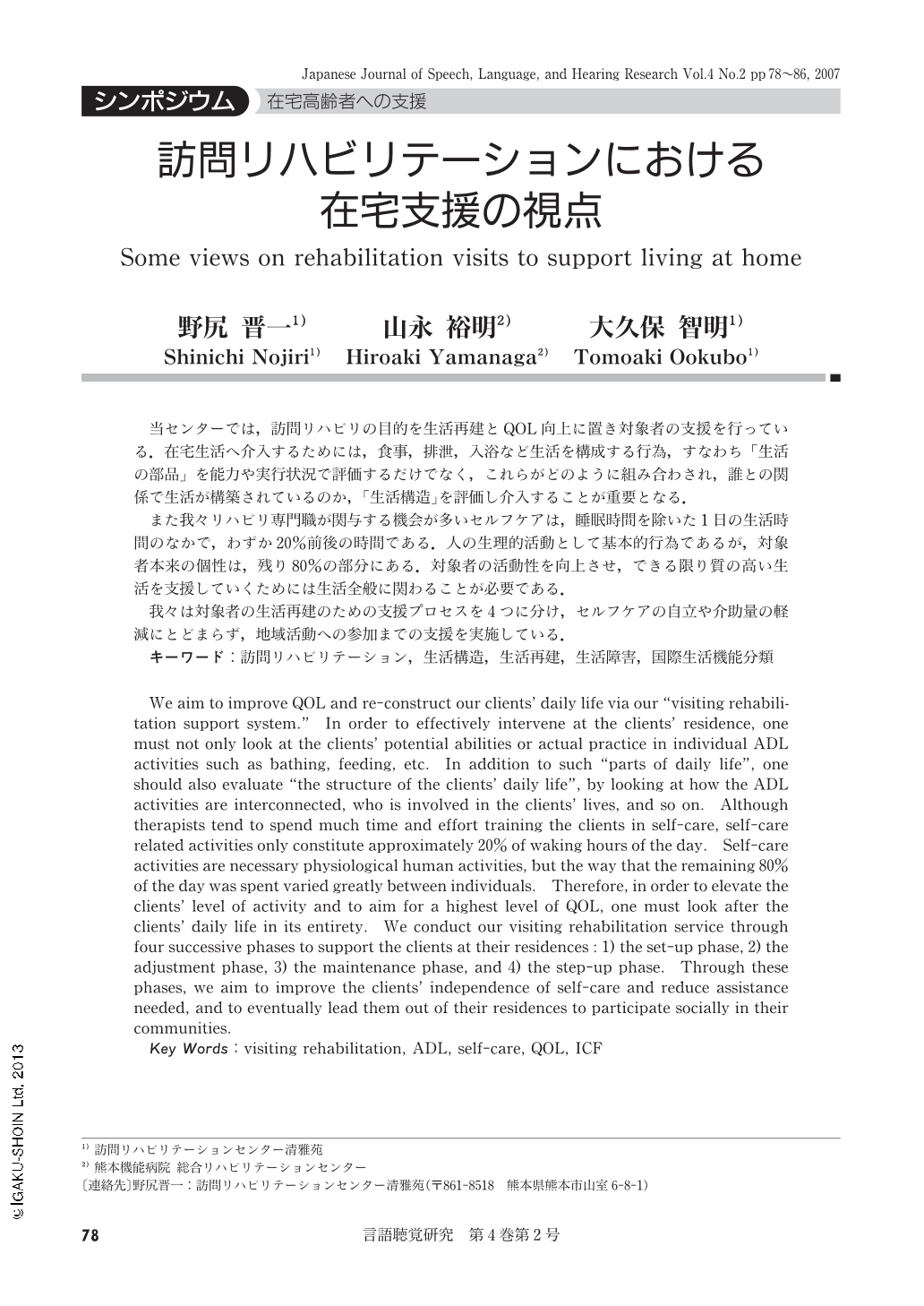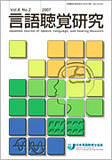Japanese
English
- 有料閲覧
- Abstract 文献概要
- 1ページ目 Look Inside
- 参考文献 Reference
当センターでは,訪問リハビリの目的を生活再建とQOL向上に置き対象者の支援を行っている.在宅生活へ介入するためには,食事,排泄,入浴など生活を構成する行為,すなわち「生活の部品」を能力や実行状況で評価するだけでなく,これらがどのように組み合わされ,誰との関係で生活が構築されているのか,「生活構造」を評価し介入することが重要となる.
また我々リハビリ専門職が関与する機会が多いセルフケアは,睡眠時間を除いた1日の生活時間のなかで,わずか20%前後の時間である.人の生理的活動として基本的行為であるが,対象者本来の個性は,残り80%の部分にある.対象者の活動性を向上させ,できる限り質の高い生活を支援していくためには生活全般に関わることが必要である.
我々は対象者の生活再建のための支援プロセスを4つに分け,セルフケアの自立や介助量の軽減にとどまらず,地域活動への参加までの支援を実施している.
We aim to improve QOL and re-construct our clients' daily life via our "visiting rehabilitation support system." In order to effectively intervene at the clients' residence, one must not only look at the clients' potential abilities or actual practice in individual ADL activities such as bathing, feeding, etc. In addition to such "parts of daily life", one should also evaluate "the structure of the clients' daily life", by looking at how the ADL activities are interconnected, who is involved in the clients' lives, and so on. Although therapists tend to spend much time and effort training the clients in self-care, self-care related activities only constitute approximately 20% of waking hours of the day. Self-care activities are necessary physiological human activities, but the way that the remaining 80% of the day was spent varied greatly between individuals. Therefore, in order to elevate the clients' level of activity and to aim for a highest level of QOL, one must look after the clients' daily life in its entirety. We conduct our visiting rehabilitation service through four successive phases to support the clients at their residences:1) the set-up phase, 2) the adjustment phase, 3) the maintenance phase, and 4) the step-up phase. Through these phases, we aim to improve the clients' independence of self-care and reduce assistance needed, and to eventually lead them out of their residences to participate socially in their communities.

Copyright © 2007, Japanese Association of Speech-Language-Hearing Therapists. All rights reserved.


